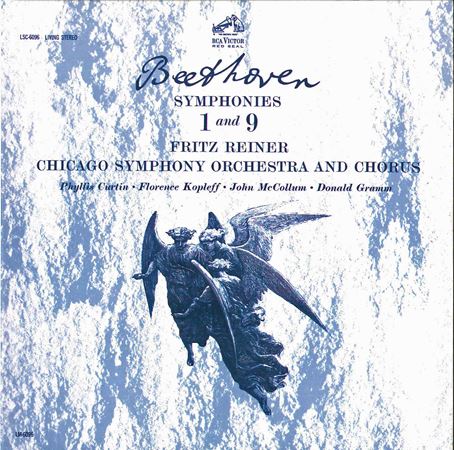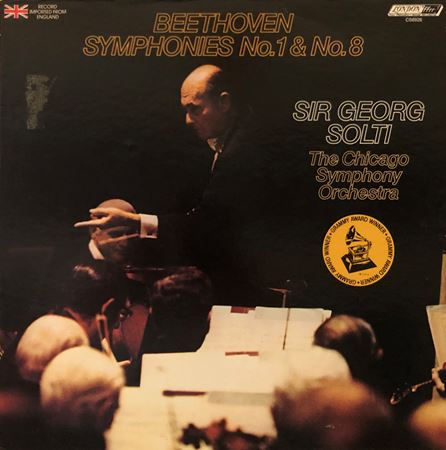Detail of title page to score of Beethoven’s First Symphony
Fritz Reiner Collection, Rosenthal Archives of the Chicago Symphony Orchestra Association
In Beethoven’s First Symphony, “the composer tries his wings,” according to Theodore Thomas, the Chicago Orchestra’s founder and first music director. In Talks About Beethoven’s Symphonies, Thomas continues: “It is sometimes said that the First Symphony is Haydn and Mozart rather than Beethoven, but that is not correct. It is Beethoven, pure and simple, but Beethoven carrying on the art of his day as it had been transmitted to him by his predecessors. He knew no other style of symphonic writing because, until his own later development, there was no other. . . . One might say that Haydn and Mozart were the cradle in which the art of Beethoven was rocked, and in the First Symphony, his art was still in this cradle. . . . [The First Symphony] is a noble work and is of especial interest as the connecting link between the art of the classic and that of the romantic period.” ’
Phillip Huscher, CSOA scholar-in-residence and program annotator, agrees. “As the first symphony by the greatest symphonist who ever lived, one might expect clues of the daring and novelty to come; since it was written at the turn of the century and premiered in Vienna, the great musical capital, in 1800, one might assume that it is with this work that Beethoven opened a new era in music. But, in fact, this symphony belongs to the 18th, not the 19th, century; it honors the tradition of Mozart, dead less than a decade, and Haydn, who had given Beethoven enough lessons to know that his student would soon set out on his own.”
Thomas first led the Orchestra in Beethoven’s First Symphony during the third season, on May 4 and 5, 1894, at the Auditorium Theatre.
Sixth music director Fritz Reiner led the Chicago Symphony Orchestra’s first commercial recording of the work in Orchestra Hall on May 8, 1961. For RCA, Richard Mohr was the producer and Lewis Layton was the recording engineer.
Sir Georg Solti and the Chicago Symphony Orchestra and Chorus first recorded Beethoven’s nine symphonies between May 1972 and September 1974 for London Records. The recordings were ultimately released as a set (along with three overtures: Egmont, Coriolan and Leonore No. 3); that set won the 1975 Grammy Award for Classical Album of the Year from the National Academy of Recording Arts and Sciences. The First Symphony was recorded at Medinah Temple on May 13, 14, 15 and 18, 1974 (along with the Second Symphony). Ray Minshull was the recording producer, and Kenneth Wilkinson and James Lock were the balance engineers.
Between September 1986 and January 1990, Solti and the Orchestra and Chorus recorded the complete Beethoven symphonies a second time, again for London Records; again, the recordings were ultimately released as a set (along with two overtures: Egmont and Leonore No. 3). The First Symphony was recorded in Orchestra Hall on November 14 and 16, 1989, and January 27, 1990 (along with the Second Symphony). Michael Haas was the recording producer and Stanley Goodall was the balance engineer.
This article also appears here.






